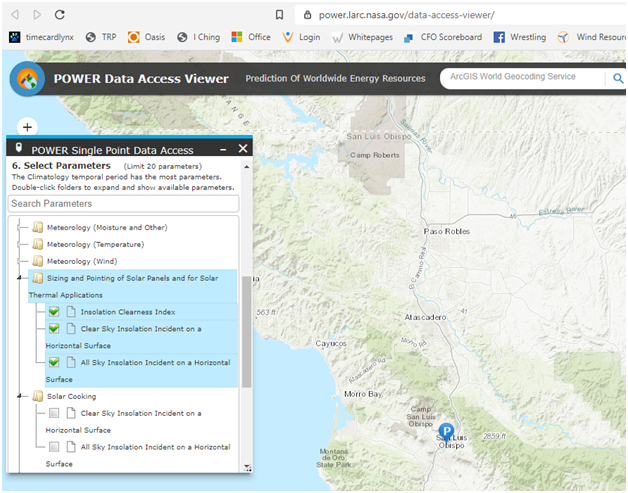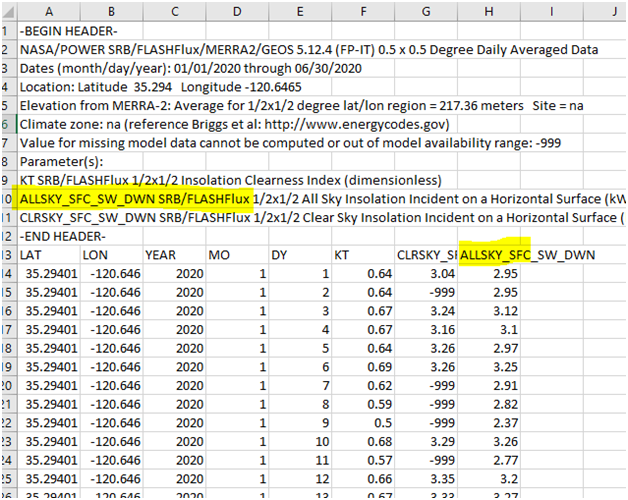If you want to do a regression on a building that already has solar, you may want to use a variable for solar insolation. NASA has a tool that will provide you with data you can use to gather your solar data.[7]
There are three variables available:
The Insolation Clearness Index does not correlate well with solar kWh production. It represents the fraction of solar radiation that is transmitted through the atmosphere, whereas the insolation numbers below will also account for number of sunlight hours and the angle of the sun.
The Clear Sky Insolation Incident on a Horizontal Surface provides insolation data when the skies are clear, but that means it returns null values when there is cloud cover. I would not use this. Solar PV produces kWh even when it is cloudy, just not as much.
The All Sky Insolation Incident on a Horizontal Surface provides the best data, in that you will most likely get data for every day. This data will likely correlate well to solar kWh production. Insolation is energy per square meter per day from the sun.
We find that the All Sky Insolation will probably be the best variable to use.
The NASA tool will provide CSV daily insolation data that you can easily add into a variable in Metrix or Option C.




